
5 Roman Colosseum Facts You Might Have Wrong
May 21, 2025
Think you know the Roman Colosseum? Let’s bust some myths and uncover surprising truths about this iconic landmark. You’ve probably read plenty of Roman Colosseum facts. After all, the Roman Colosseum, also known as the Flavian Amphitheatre, is one of the most famous ancient monuments in the world, and a symbol of Rome.
It attracts roughly 6 million visitors every year. Despite its popularity, many misconceptions still surround it. While researching for the book Discovering the Colosseum, Mauro Poma dug deep into many of the Roman Colosseum facts.
He found that, in some cases, hundreds of years of popular myth, hearsay, rumors, and of course Hollywood movies, had hidden the actual truth. It’s time for some fact-checking, let’s discover the 5 biggest misconceptions, and the truths behind them, of popular Roman Colosseum facts people all around the globe believe as absolutely true.
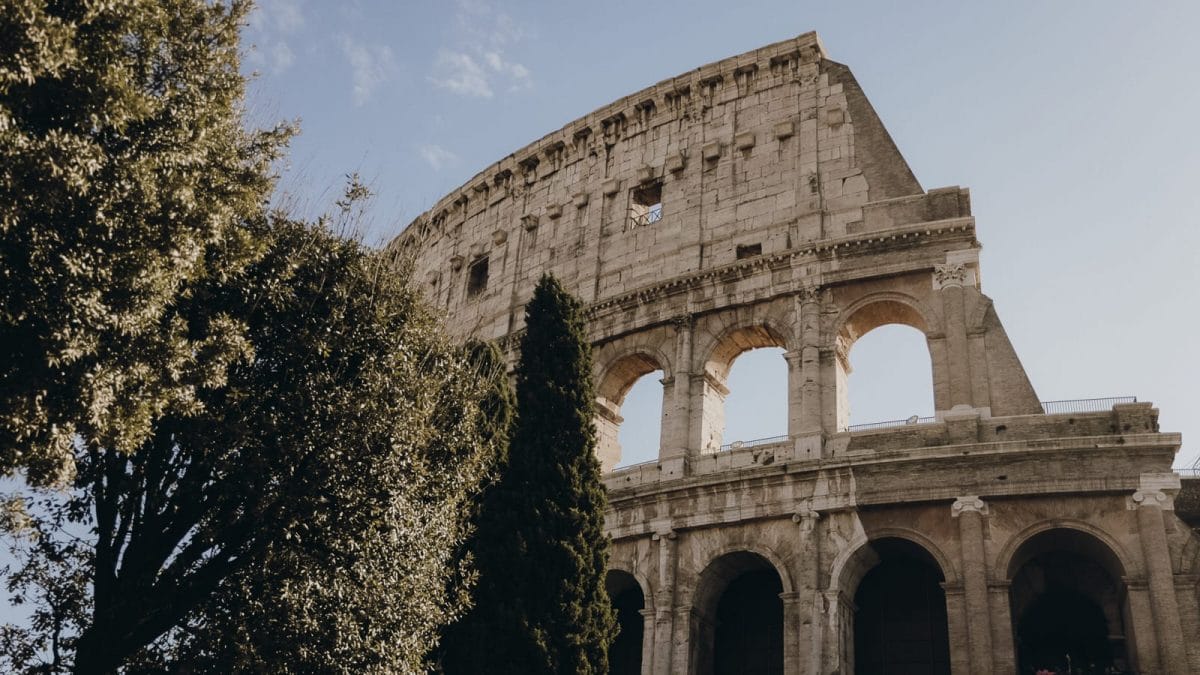
The Roman Colosseum’s many centuries of history make you wonder what is true and what isn’t.
Table of Contents
ToggleThe emperor’s “thumbs down” signal to deny mercy
We’ve learned a lot of wrong Roman Colosseum facts in Hollywood movies. The decisive moment after an epic fight in the historic building leads to a gesture by the emperor. Thumbs up, or thumbs down? But this myth comes from even before the invention of cinema.
- The gesture was immortalized in Jean-León Gérome’s 19th century painting Pollice Verso, which is what the ancient Roman’s called the gesture, literally “with a thumb turned.”
- The problem is that it’s never been clear how turned the thumb was. In reality, Romans probably indicated the denial of mercy by placing their thumbs horizontally to symbolize a sword cutting the throat of the defeated gladiator. At the same time they shouted “Iugula! Iugula!” meaning “Throat! Throat!”
- In this case, the gladiator bowed and waited for the blow to the nape, or throat. Normally, those who had to die did not remove their helmets, so that the opponent was not forced to see their last look.
- This habit was a consequence of the fact that many gladiators trained together and some of them were certainly friends. Imagine if, one fine day, you had to fight a friend or, even worse, kill him.

Now you can walk on the arena floor and imagine what it was like to be a gladiator.
The emperor ordering death after gladiator matches
Contrary to this common belief about the Colosseum, the probability of exiting from the arena alive—at least in the Republican era and in the first imperial age—was not low.
There were more risks of dying from deep wounds, or cowardice (which could enrage the audience, who would consequently ask for the gladiator to be killed), than by being denied mercy.
In late Imperial times, forgiveness actually became commonplace. Roman Colosseum facts often tell us that once gladiators entered the arena, there was no way to leave alive, but this is not true.

Gladiators could, in many occasions, leave the arena alive. Photo credit: Hans Splinter
Were Christians really martyred in the Colosseum?
Some Roman Colosseum facts, like this one, can be tricky, because it’s true that Christians were killed in the Colosseum, but not for the reason you might think. Believe it or not, we still have no clear evidence that Christians were executed inside Rome’s Colosseum for being Christian:
- Undoubtedly, some Christians were killed in the Colosseum. But, as far as we can tell right now, their religion was incidental, and they were simply part of the normal spectacles.
- Roman history has the annoying habit of changing as new discoveries are made. For right now, the evidence just does not support the sort of mass Christian martyrs that popular culture has made commonplace in people’s imaginations.
- We do, however, know that Christians were killed in other places like the private circus of Nero, situated not far from the present-day Basilica of St. Peter. We also know what Christians thought of the blood sports: interestingly, they did not feel compassion for the gladiators killing each other.
- Instead, they thought that it was the public who suffered the most moral and spiritual damage from attending such violent spectacle. A belief surprisingly close to that of the pagan writers. Only later did Christians begin to feel compassion for those actually fighting in the arena.

Not all Roman Colosseum facts are straightforward.
Were Gladiator duels the only activity at the Colosseum?
Certain Roman Colosseum facts, like this one, are completely false, and there is plenty of evidence to prove it. The program of the games in the Colosseum was pretty multi-faceted, as far as blood sports go. It included a series of shows and performances that lasted several hours.
They began with a presentation of all the stars of the day. The morning program then continued with fights between animals, followed by circus performances, and ended with hunting games. Around noon, during the lunch break, death sentences or public executions of criminals were staged.
Public executions had a dual purpose: to warn the people of the consequences of breaking strict Roman law, and to fill the lunch break by exploiting these men as human merchandise to be sacrificed, for the pleasure of the spectators. The afternoon would continue with the long-awaited confrontations between gladiators.

There was an extensive list of events happening all day long in the Roman Colosseum, not only gladiator fights.
Did only felines fight in the Colosseum?
In the movies, you only see lions and tigers, but the truth is that, on top of the big cats, ancient Romans killed entire menageries of animals:
- From the historical records, we know that there were also rhinos, hippos, crocodiles, giraffes, elephants, gazelles, antelopes, jackals, ostriches, hyenas, cheetahs, panthers, bears, and leopards, as well as donkeys, camels, horses, rabbits, deer, boars, and wolves, to name a few.
Where did the Romans find all of these animals?
- Crocodiles, rhinos, hippos, and giraffes came from southern Egypt. Gazelles, antelopes, jackals, ostriches, hyenas, lions, cheetahs, panthers, and elephants came from North Africa.
- The bears were mostly from the Atlas Mountains in Morocco. Italy, and other European countries, provided all the herbivores, such as hares, roe deer, deer, wild pigs, and donkeys, as well as bears, bison, bulls, wolves, and moose.
One of the exciting, but also difficult parts of writing about the Colosseum is that we are always learning new things about it. When you visit, don’t forget that every single stone can tell you so many stories. And if even one of them could talk, you would be overwhelmed by everything it could tell you.
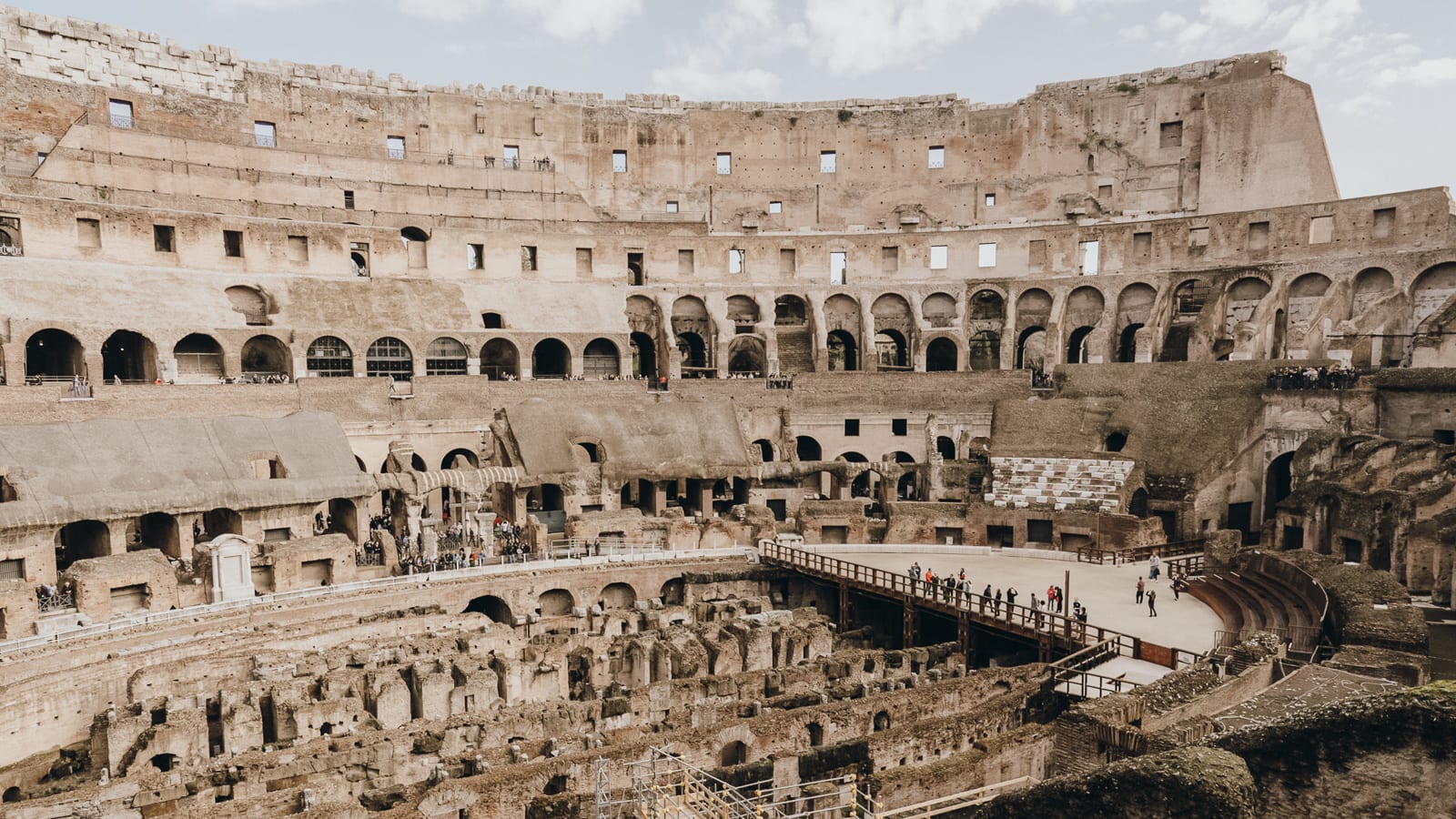
Plenty of animals were killed in this arena, and not only lions and tigers.
Roman Colosseum FAQ
What types of animals fought in the Colosseum?
Lions, tigers, and even rhinos were part of the spectacles, but their use varied over time. Exotic animals from across the Roman Empire, including elephants, leopards, hippos, and bears, were captured and transported to Rome to be used in hunting games known as venationes.
These events pitted animals against gladiators or against each other, providing thrilling and often gruesome entertainment for the spectators.
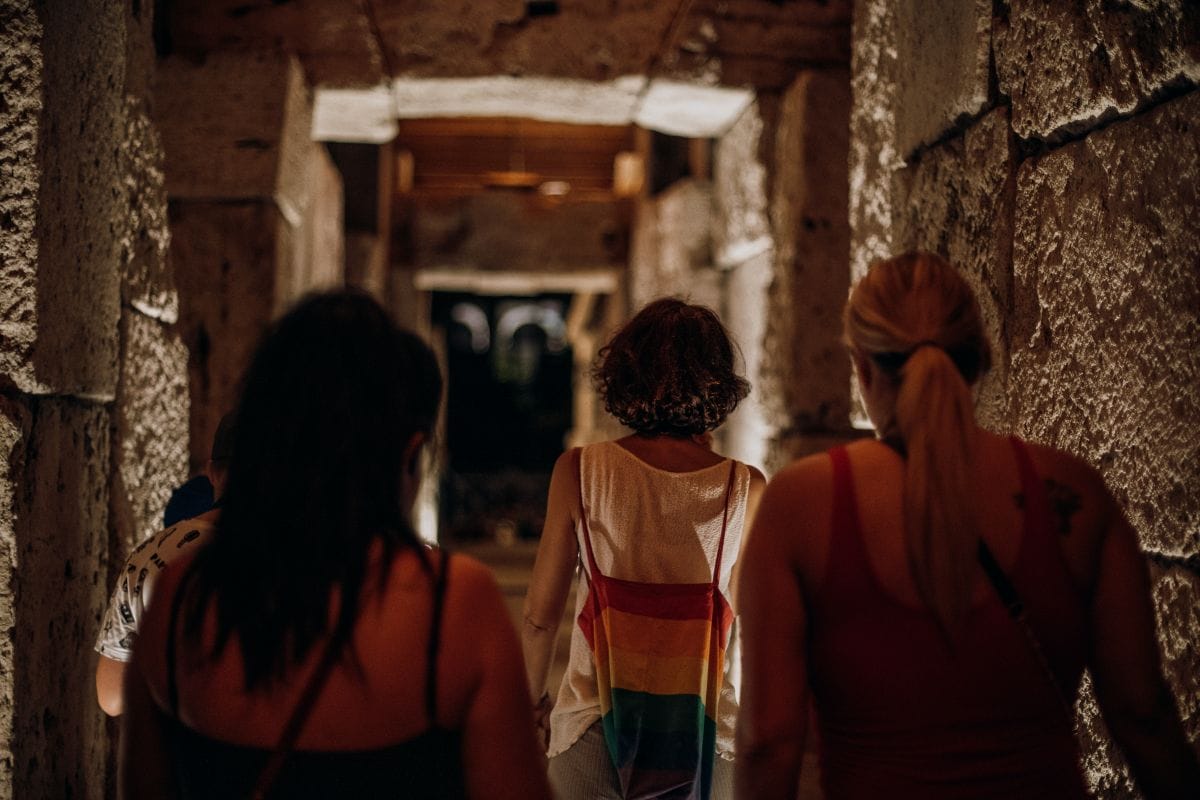
Which of these facts were the most surprising?
How was the Colosseum’s architecture innovative?
The Colosseum featured groundbreaking engineering, including retractable awnings and underground chambers. The massive amphitheater was built using a combination of concrete, brick, and travertine, allowing for both durability and quick construction.
A sophisticated system of pulleys and trapdoors in the hypogeum (underground chambers) enabled dramatic entrances of gladiators and animals. Additionally, a retractable awning system called the velarium provided shade for spectators, demonstrating Rome’s advanced knowledge of mechanics and architecture.

New facts about the Colosseum are being uncovered all the time.
How many people could the Colosseum hold?
Estimates suggest it could seat up to 50,000 spectators. The Colosseum’s tiered seating was carefully designed to accommodate different social classes, with the best seats reserved for senators and nobility, while common citizens and lower classes sat higher up.
The structure also featured multiple entrances and an efficient design that allowed for a swift exit, making it a model for modern stadiums.
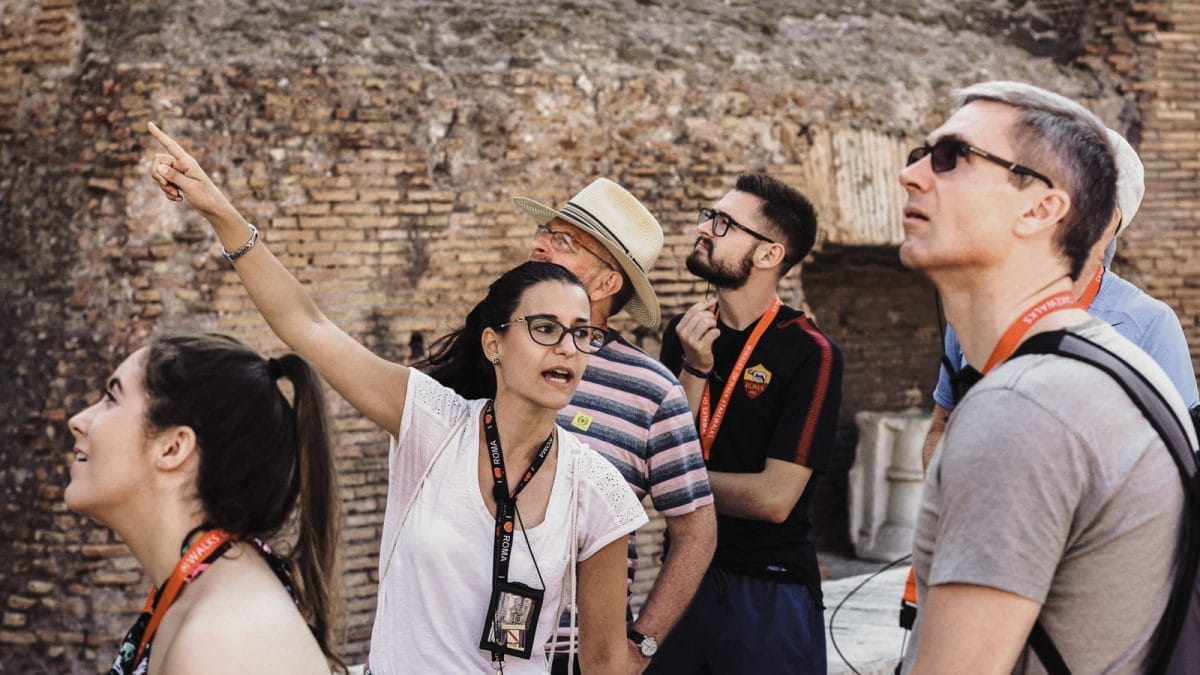
Spectators at the Colosseum came from every walk of life.
Is the Colosseum still used today?
The Colosseum serves as a popular tourist attraction and occasional venue for special events. Millions of visitors explore the site each year, marveling at its history and architecture.
While it no longer hosts gladiatorial battles, the amphitheater has been used for concerts, religious ceremonies, and even theatrical performances.
It also serves as a powerful symbol of Rome’s past, and preservation efforts continue to maintain this iconic landmark for future generations.
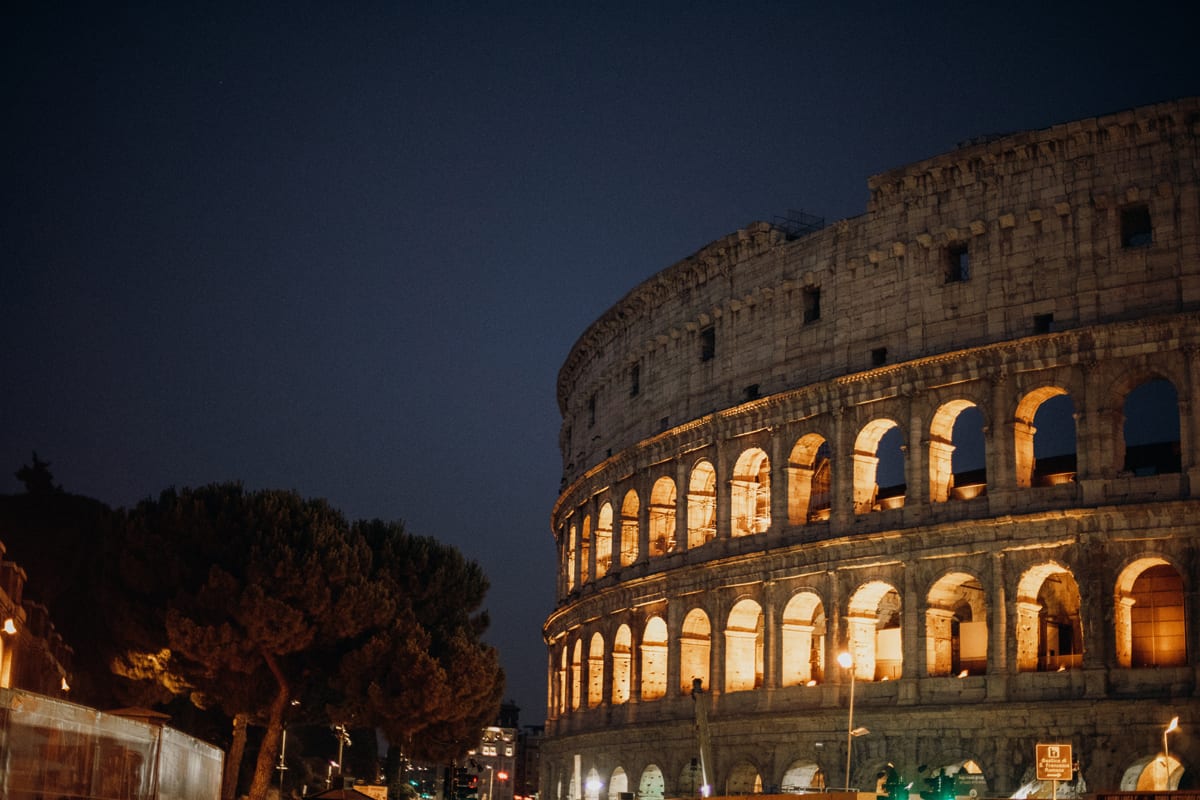
Be sure to check if there are any special events and concerts at the Colosseum during your visit.
Update Notice: This post was updated on May 6, 2025.
Want to bring ancient Rome to life? Join our Premium Colosseum Guided Tour, including the Roman Forum & Palatine Hill. This highly-rated tour provides the perfect mix of history and storytelling – perfect for your first visit to the Colosseum!
by Walks of Italy
View more by Walks ›Book a Tour

Pristine Sistine - The Chapel at its Best
€89
1794 reviews

Premium Colosseum Tour with Roman Forum Palatine Hill
€56
850 reviews

Pasta-Making Class: Cook, Dine Drink Wine with a Local Chef
€64
121 reviews

Crypts, Bones Catacombs: Underground Tour of Rome
€69
401 reviews

VIP Doge's Palace Secret Passages Tour
€79
18 reviews

Legendary Venice: St. Mark's Basilica, Terrace Doge's Palace
€69
286 reviews









